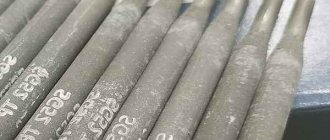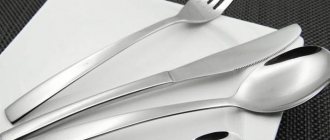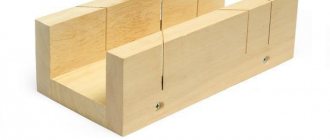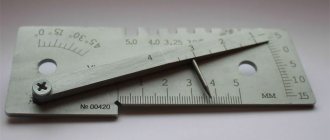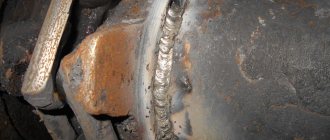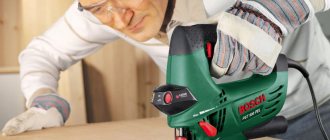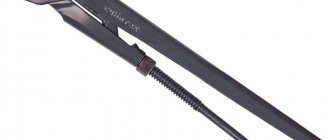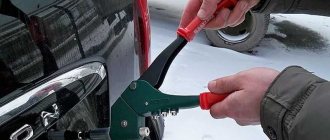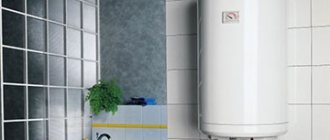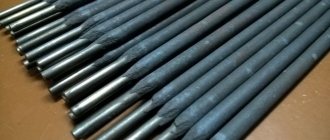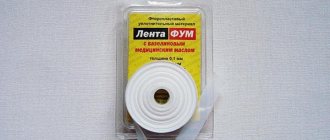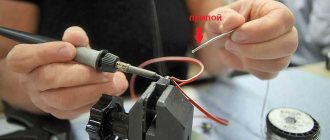Any repair that is performed when using an electrode for soldering plastic products is considered high quality. Thanks to their use, the welding is strong, almost like solid plastic, and sometimes looks even better than the factory specifications provided by the manufacturer.
An important quality when welding is the skillful placement of the strip by the master in such a way that the part is as efficient as possible and does not interfere with other spare parts of the equipment being repaired.
When might electrodes be needed for soldering plastic?
Almost all structures made of thermoplastic plastic can be repaired using flat electrodes.
For example, plastic electrodes are used for:
- bumper repair;
- body parts or decorative trims;
- headlight housings;
- various tanks and containers into which gasoline or other necessary liquid is poured;
- repair of parts in the car interior;
- other plastic products made from polypropylene.
Requirements for soldering irons for plastic
One of the main parameters for any such tool is power. When choosing a suitable soldering iron, you need to ensure that it is at least 100 W
This is a very important requirement that must be fulfilled, since otherwise the plastic may simply not melt. When choosing thermal hair dryers, you should focus on models from 1600 W
The main requirements include rapid heating of the tip. Standard models that take several minutes to warm up are not suitable here. When working with plastic, it is better to choose those options in which the tip reaches the desired temperature within a period of up to 10 seconds. For some situations, it is permissible to take a model with a longer warm-up time, but in professional work this will be a big disadvantage.
TOP 5 best models of bumper soldering irons
A soldering iron for a bumper is a rather expensive product, since it is often supplied in a ready-made kit, and also has its own features and technical characteristics. Some of the best models that are presented on the domestic market include:
Steinel. This is a whole set that includes a heat gun. This is a fairly powerful 2.3 kW device that can heat material up to 650 degrees Celsius. Supplied in a plastic case with all necessary attachments and accessories.
Soldering iron for plastic Steinel
Intertool RT-2003. The tool allows you to work with materials with a small thickness.
Soldering iron for plastic Intertool RT-2003
Teroson. Another set that uses a heating gun. The kit includes all the necessary accessories and tools. There are cartridges, mixers and reinforcing materials here. The soldering iron can also be used to work with other plastic parts.
Soldering the bumper with Teroson material
Neico. A professional Chinese instrument with a power of 1600 W. The kit includes additional attachments and a roller. Professional components make the work easier and do not require you to buy anything extra at first.
Soldering iron Neico
Stapler. Inexpensive and high-quality model with a power of 100 W. This is a standard electrical tool that allows you to work with staples. Soldering iron for bumpers of this type. Using braces of the right size allows you to create the highest quality and affordable seam.
Progress
The working surface must first be degreased and then sanded. This will help improve the quality of the connection. When working with a standard soldering iron, the edges of the part are simply melted and then connected to each other. It is advisable to immediately press them tightly against each other, and then carry out heat treatment. When the two ends melt and are tightly connected to each other, a high-quality seam is formed.
Approximately the same principle is present when processing with a hairdryer. A narrowly directed air flow of heated air, or its wider distribution, helps to achieve the transition of plastic to the desired state. If we are talking about leveling, then you need to wait until the bumper becomes plastic and then carry out the necessary procedures. When the ends melt, they should be immediately connected tightly and held until everything dries.
When working with staples, a consumable is inserted into the soldering iron, which is heated by the tool and immersed under pressure inside the plastic. Due to oscillatory movements, a bond is created. The bracket has a special shape that allows you to grab both parts of the bumper and connect them together. as it cools, the metal part is detached from the tool and remains inside the plastic, reinforcing the connected area.
Conclusion
When repairing bumpers, many problems arise that relate to cosmetic effects. Having the right soldering iron for the job will help you overcome many of the shortcomings and achieve the look you want. Many specialized models now have the required parameters, so there are no big problems when choosing. The main thing is to focus on the requirements for the tool.
Features of these electrodes
Flat electrodes are strips of different sizes, made from modified plastic through chemical and secondary processing. This material has high resistance to rupture or external damage, has good ductility, and high adhesion to many plastic copolymers.
One of the main difficulties that arise during the repair work of plastic bumpers or other car parts is welding in such a way that the seam is strong, similar to the characteristics of the original form, and also as smooth as possible.
Table of characteristics of plastics.
Strength may be low due to the characteristics of the material used in the production of plastic parts, as well as the active oxidation process if the temperature increases. The structure ages, which provokes early damage.
Many machine parts made of plastic, thermoplastic or polymer can retain their function when frequently melted. Thanks to this, most spare parts in a car can undergo a thermal process during repair work.
Some of the most popular types of plastic used in mechanical engineering are:
- polypropylene plastic electrode - used in repairing machines with plastic parts;
- polyethylene material;
- polyamide;
- styrene, acrylonitrile, copolymer-butadiene;
- polybutyl terephthalate.
Any experienced craftsman who has at least once soldered plastic using an electrode knows that these materials are repairable.
Bar selection
Welding rods for plastic (or any other polymer) can be made from a wide variety of materials. This can be a PP welding rod (aka PP or polypropylene), an ABS welding rod and dozens of other varieties. Simply put, as many types of plastics, there are as many types of rods.
This is due to the fact that the rods for welding plastic must have exactly the same composition as the part. Everything here is the same as when welding metal, where the composition of the wire must also match the composition of the metal. Simply put, if you are welding HDPE (low-density polyethylene), then use a HDPE welding rod.
Advantages and disadvantages
Flat electrodes have a significant number of advantages and a small number of disadvantages. The only thing that can be attributed to the latter is that it is necessary to control the welding electrode for welding plastic so that it does not overheat and can hold the fastener for a long time.
The main advantages include the following aspects:
- Electrodes are not limited in time, that is, they have no expiration date.
- They have high strength due to the special structure of these parts. This can be seen when the bumper is damaged again; the crack does not appear at the seam site, but nearby on the plastic, which cannot be repaired.
- The parts are easy to use. They are single component. To work with them, you only need to clean the surface and heat the flat electrode to the required melting temperature.
- These parts also have good elasticity. Thanks to this property, the part can be placed in places where it is quite difficult to reach, and initial cunning fastenings of cracks that have appeared can be made.
- When using flat planks, the quality of the repair will be high, and the result itself will last for a long time without any additional maintenance conditions.
- In special situations, you can restore missing parts of the plastic using flat strips. This is done by laying one layer on top of another, forming the shape necessary for restoration.
- The parts in question do not contain harmful substances that can harm health. However, you should not neglect the advice regarding timely ventilation of the room.
- The cost of any type of planks is minimal. This allows the specialist to save an impressive amount, which allows him to spend money on more expensive parts. There is a discount for bulk purchases of parts. Each specialized store can have it individually.
- The flat electrode covers most of the surface near the part where the seam needs to be welded. Thanks to this feature, the loads from the broken area are evenly distributed to the intact parts. This also gives extra strength to the mount.
- If you follow the correct technology for the welding process and operation of the strips in question, then, with sufficient experience and skill of a specialist, you can significantly expand the capabilities, allowing you to maintain the original strength of the material.
- There is also a ratio of the coefficients of thermal expansion of the material between the strip and the repaired part.
Areas of application
Currently, a hot air gun with attachments is used both at home and in large enterprises to solve various problems. One tool cannot perform most functions, but with a set of attachments the device becomes multifunctional and is used:
- for joining and processing seams;
- sealing cracks, deformations, irregularities;
- soldering objects made of polymer-based film, plastic with other materials;
- roofing works;
- installation, dismantling, restoration work in the automotive sector.
In addition to the above activities, a hot air gun with attachments can perform a lot of other work where soft polymer materials are used and thermal exposure is required.
Overview of flat electrodes
There are several main types of electrodes used in the plastic soldering process. They are often designated by Latin letters: A, B and C. The classification of electrodes is divided only by thickness and width. The standard length is 200 millimeters.
The electrode of group “A” may include strips measuring 1x15. They are used for the front parts of the structure or internal seams of spare parts, where the thickness reaches 4 millimeters.
Flat electrodes of type “B” are available in welding rods in size 1.3x18 for repair work on bumpers. They can also be used to weld a crack or fracture located on the outside of a structure with a thickness of no more than 6 millimeters.
Electrodes of type “C” combine strips of dimensions 1.5x20. They can be used as reinforcing reinforcement for seams that bear increased load during operation of various spare parts. The wall thickness should not be more than 10 millimeters.
In addition to the listed operating methods, these types of soldering electrodes can be used to build up broken parts in plastic products or to patch up any resulting hole.
Thanks to this classification, you can quickly and accurately select the required strip for a specific wall size.
For example, a bumper can be repaired with a flat strip from group “A” or “B” only where the wall is no more than 3 millimeters. Otherwise, there is a risk of deforming the spare part when the surface cools down after the work has been completed.
https://youtu.be/0dkIduik2QU
general information
An avid car enthusiast often has to take his car to a repair shop to have the bumper repaired. The person does this without trying to understand the essence of the repair work.
But if you think about it, car bumpers are made from plastic compounds. And once you understand what plastic welding and rods for soldering polymers are, you can repair your car with your own hands.
An electrode for polymers (“plastic rod”, “filler wire for polymers” and many other names) is a thin elongated wire that is made from an artificial polymer substance.
It is produced in reels or individually. For personal use, the piece version of plastic rods is more convenient.
How to work with flat electrodes?
If you have the task of welding several pieces of plastic together or carrying out repair work on a plastic product, soldering will be the easiest and cheapest option. For these purposes, you will need welding equipment and a flat electrode for it.
In order for the seams to be high-quality and even, the strip must withstand the high temperature of the welding torch.
Rebuilt bumpers are some of the easiest parts to weld together.
In general, the operating principle is as follows:
- It is necessary to warm up the welding equipment to the required temperature.
- We prepare the plastic for the procedure, that is, we separate it from the entire structure, if possible, clean it with water and soap or detergent. Wipe dry.
- Next, the plastic needs to be cleaned. This is done using sandpaper to smooth the surface.
- Using foil wrapped around the edges of the plastic surface, protection is created so that the strips do not damage unnecessary parts. Check the fastening carefully.
- We insert the bar into the already heated equipment. The parts will act as a guide line for the flow of hot air in the welding tool.
- Slowly move the tip of the tool along the edge or attachment point to weld the plastic to each other. Movements must be stable and uniform.
- Leave the plastic parts to cool for a few minutes.
- Clean the resulting seam using sandpaper to a uniform consistency.
How to use?
Welding with plastic electrodes is quite simple even for a beginner. You need to start by cleaning the surface from dirt and traces of oil. For cleaning, you can use various devices: from sandpaper and a file to a grinding machine. It all depends on the degree of pollution. Cleaning is necessary to improve the quality of soldering. On a cleaned surface, the seams are much better and more durable.
If you are using rods for welding plastic with a round cross-section, then you need to sharpen their ends before soldering.
Now look at what kind of soldering iron you have. Most likely, this is a welding extruder with a hole for a rod. Insert the electrode into the device and turn it on. Then you need to wait until the rod heats up, attach the extruder nozzle to the joint and press the rod feed button. It will be fed to the joint in molten form, and you will only have to guide the soldering iron in the desired direction.
If you are using a less professional tool (for example, a welding gun), then take the rod in one hand and place its end against the joint. Take the hairdryer in your other hand. Turn it on and start heating the rod evenly so that it begins to melt. Further steps are the same as for soldering with an extruder.
The soldering electrode should not melt too quickly or too slowly. Try to experimentally determine the optimal speed of melting and guiding of the rod. The seam should be formed evenly. When soldering, feed the rod with little force. So that it presses slightly against the joint. Then the seam will fill more evenly.
There is a high chance that during soldering you will not use up all the rod, and excess may remain on the joint surface. To remove excess, warm it up and cut it off with a utility knife.
Secrets of PVC soldering and safety measures
Soldering work should be performed in a room with positive temperatures. It is necessary to take into account that the colder it is, the longer it will take the elements to warm up. However, there are a number of other rules that must be followed.
Features of soldering PVC pipes:
- The iron power should be 1200 W.
- The hand-held device is used for pipes with a diameter of up to 32 mm. For larger sizes, professional equipment is used.
- Before starting work, the device must be warmed up for 5-10 minutes. This is necessary for the device with nozzles to achieve the desired parameters.
- After soldering, it is prohibited to twist the connection. Otherwise, it may compromise the integrity of the seam. You can only straighten the distortions so that the connection does not leak.
- You don't need to use a lot of force to compress the parts. Otherwise, the gap will fill with hot plastic and impair patency.
- Gaps between the pipe joint and the inside of the fitting are prohibited. Otherwise, leaks will occur under pressure.
- The soldered area must be completely cool before use.
- After completion of work, the iron is cleaned of plastic. This way, carbon deposits will not appear on the device, and the elements for soldering will not be damaged.
A flat wooden stick should be used for cleaning. This way the Teflon will not be damaged. Metal objects can scratch the surface and render the nozzle unusable, because the plastic will begin to stick to the coating.
The soldering apparatus should be placed in such a way that it stands stable
When working with power tools, it is important to follow safety precautions. Otherwise, you may get burned or injured. You need to wear protective gloves when working
The room must be clean, dust-free. Otherwise, particles will settle on the plastic and interfere with the quality of the seal.
You need to wear protective gloves when working. The room must be clean, dust-free. Otherwise, particles will settle on the plastic and interfere with the quality of the seal.
The soldering iron is placed horizontally on the surface. During operation, it is prohibited to turn off the equipment. Work begins when the iron is completely warmed up. In modern models this is indicated by an indicator. For old-style options, wait 20 minutes.
Soldering polyethylene pipes does not have a complex technology. Welding may have special features if you solder reinforced products
It is important to take precautions when doing this. Basic secrets and rules will help you solder pipes correctly. You should also follow the instructions exactly
You should also follow the instructions exactly
You should also follow the instructions exactly.
Pipe after repair: operating features
After the polypropylene pipe has been repaired, you should pay attention to some features of its operation. Under no circumstances should any mechanical impact be allowed on the soldering area.
The repaired breakdown itself must be constantly monitored to see if it begins to get wet. This cannot always be seen with the naked eye, but ordinary toilet paper leaning against the pipe will help determine the location of even the smallest leak. Moisture stains will instantly become visible on it.
I would like to remind you that such a measure is only temporary. At the first opportunity, it is necessary to replace the damaged section of the pipe. You can do this kind of work yourself if you have the opportunity to “rent” an iron from your friends, which is used for soldering. By the way, I saw the algorithm for producing work on the pages of this magazine. At the same time, everything was described quite competently, as far as I thought. At least, I carried out soldering in my apartment, guided by these instructions.
This is what the repaired pipe will look like after soldering
